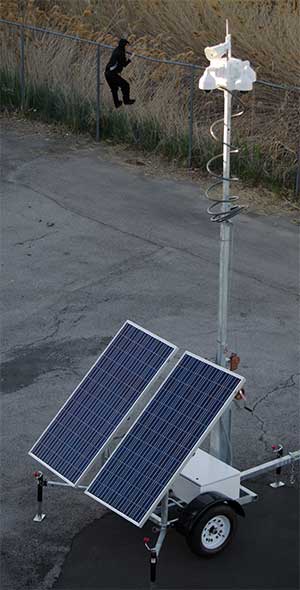
5 Ideas for a Better Construction Site Security Plan
Construction site theft and vandalism have become common problems for construction companies of all sizes. It’s estimated that equipment theft reaches as high as $1 billion each year, according to the National Insurance Crime Bureau. When an area has a sudden surge in development, organized theft rings typically aren’t far behind.
To prevent your company from becoming the next statistic, it’s important to create an effective construction site security plan. While each plan must be customized for the job site and the company’s situation, we’ve discovered that there are five ideas a business should consider that can make the biggest difference for preventing theft.
The following is not a construction site security plan template. Instead, it offers ideas on how to think about your plan during development.
1. Recruit others to be your eyes and ears
Every security plan is better when everyone works together. Yes, promoting security awareness to employees is a must, but you need to go a little further. For example, consider contacting police and fire departments to let them know about the construction project. Also, contact management of nearby properties to see if they’d be willing to keep an eye out for suspicious activity.
2. Think like a criminal
Walk around the property at night and ask yourself how confident you would feel if you wanted to steal equipment or vandalize your area. Don’t just think like a professional thief. How about a kid just wanting to play around or cause trouble? If you were them, how would you do it?
Now, let’s take away some of their confidence. First, if possible, surround the perimeter with fencing. If fencing is in place, look for the easiest way for someone to breach your perimeter. Avoid putting the fence near trees, and avoid putting equipment and materials near the fence. Next, make sure that the area is well lit, especially any weak areas in the perimeter.
3. Cost-effectively guard the site

Fences and lights can deter the amateur thief, but a determined criminal comes prepared with bolt cutters and a plan. That’s where security guards come in.
There are two types of security guards: virtual (or remote) guards and on-site guards. On-site guards are a good solution for large sites during business hours. They can check who goes in and out of the property.
However, on-site guards aren’t always the most cost-effective solution after business hours. On small sites, the use of an on-site guard can be expensive. On large sites, their effectiveness diminishes due to the sheer size of the property to be protected. In that case, even more guards are required. They’re also less effective in low light conditions.
Virtual security guards (also called remote security guards) use a high-tech approach to security. They combine remote guards, detection software, security cameras and loudspeakers. If someone crosses the perimeter, the remote guard is alerted. From there, the guard can engage the trespasser via amplified loudspeakers and, if necessary, contact the authorities.
The advantage of this approach is that the entire property can be actively monitored at the same time, even in low light conditions. If electrical power isn’t available, remote guard mobile surveillance units (see image) can run on solar power and batteries.
4. Make sure the thief isn’t already within the perimeter
Unfortunately, there’s always the possibility that there’s an employee or subcontractor who doesn’t have your best interests in mind. This is one of the tougher problems to deal with, but there are measures you can take.
First, assign someone to inspect the site at the end of each day to assure nothing has been compromised, by accident or otherwise. Next, set up and maintain an inventory control system for all equipment. Finally, have someone check all trash before it’s removed from the site.
5. Disabled equipment is harder to steal
Disabling heavy equipment is a simple way to prevent equipment theft and misuse. Remove batteries and lower blades and buckets. Other solutions include hydraulic cylinder locks, fuel and ignition cut-off switches, alarms and tracking devices. Also, be sure to lock oil and gas tank caps.
Of course, the key to this idea, or any of the ideas presented here, is consistency. All it takes is a rushed worker to forget to remove a battery and you’ve just lost thousands of dollars in equipment. Make sure that a specific employee is in charge of each security job. You may want to create a daily checklist that each assigned person must sign off on before clocking out.
Hopefully, the ideas discussed here will offer some food for thought when developing your job site security plan.
SentraCam offers advanced security camera monitoring and virtual security guard services throughout Arizona, California, Colorado, Texas, and Utah. Contact us today for a customized risk assessment and quote.